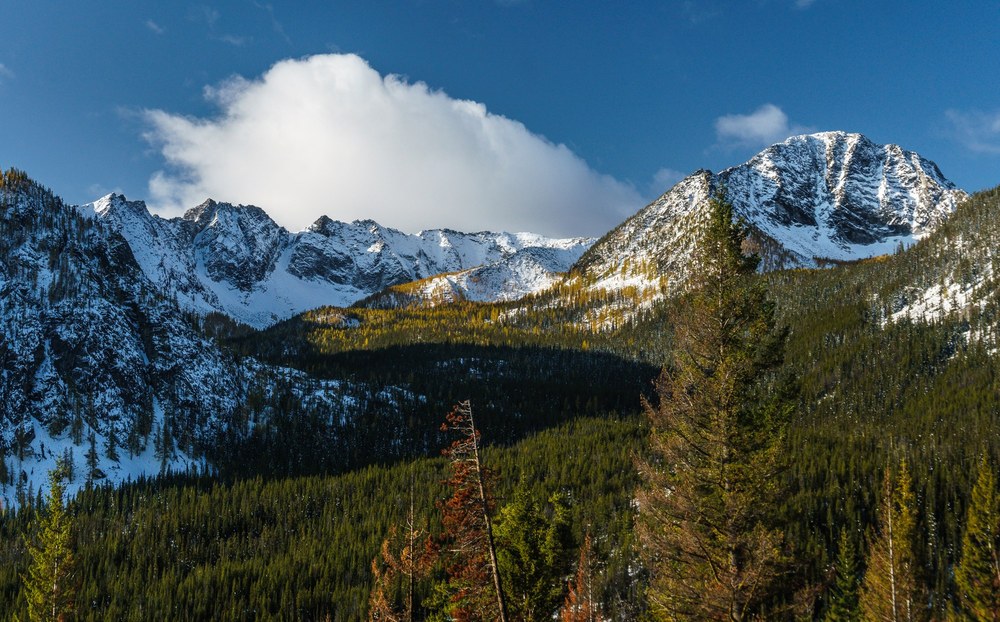
Camping in designated campgrounds can be tough on short notice. With the growing popularity of outdoor recreation, many areas book up months in advance. Dispersed camping is a fantastic alternative to staying in campgrounds, and can be a great way to explore new areas and get further off the beaten path.
What Is Dispersed Camping?
The U.S. Forest Service defines dispersed camping as “camping anywhere in the National Forest OUTSIDE of a designated campground." This means you will often find yourself in the middle of the field, at the end of a dirt road, or otherwise off the beaten trail.
For the most part, you won't find amenities at dispersed camping areas, as dispersed camping means no services. You will find no trash cans or trash removal. You are also unlikely to find picnic tables, fire pits, or a water spigot. Only a few dispersed camping areas have toilets.
If you’re used to a camping in a campground with a picnic bench, fire pit, electricity, and water, dispersed camping will be an entirely new experience. Think of it as a combination of car-camping and backpacking: all of the luxuries of having everything you can carry in your car, with the possible seclusion of a backpacking trip.
Tips for a successful trip
To enjoy your first (or next) dispersed camping experience, we recommend following these guidelines and incorporating a few new items into your packing list.
- You need to be self-contained. With no provided amenities, you will need to bring water (we recommend 1 gallon per person per day for drinking, brushing teeth, cooking, and cleaning), garbage bags for trash and recycling, and a way to dispose of your human waste (either poop bags or a poop shovel; be sure to follow guidelines for Leave No Trace, an no matter your method always carry out toilet paper).
- Select and place your campsite at least 100 feet from any stream or other water source.
- If you'll have dishes to do, plan ahead. Make sure to bring biodegradable soap, and perhaps a bucket to clean your dishes in. You'll need to dump leftover gray water (dirty dish water) away from your campsite, at least 200 feet away from any water source, and spread it over a wide area to minimize impact in any one spot.
- Pack your food thoughtfully. Creatures and critters also want a bite of what you're eating. Make sure it's put away properly at night. At the minimum this means keep all food and fragrant products away from your tent, either in a sealed bin next to your cooking area or in your car (and remember critters love to eat leftovers - and leave you a surprise of their own - on camp stoves). If you're in bear country, be sure to follow localized bear-safety guidelines.
- When it comes to that bluetooth speaker you're excited to pack, think about leaving it at home. Since you're in the wilderness, follow the Leave No Trace noise principle of avoiding loud voices or noises.
- You may camp in a dispersed area for up to 16 days. After 16 days, you must move at least 5 road miles for camping in another dispersed area. Campers may not spend more than 16 days of any 30 day period at the same dispersed area.
- Contact the local Forest Service office to see if any restrictions, especially fire restrictions, are in place.
Where You Can Camp Dispersedly
The USFS has designated areas where dispersed camping is allowed, but it can be tough to find specific spots. We've gathered the pages for each of our major chunks of public land below.
- Mt. Baker-Snoqualmie National Forest
- Okanogan-Wenatchee National Forest
- Olympic National Forest
- Gifford Pinchot National Forest
- Colville National Forest
Get out there and spend a night in the woods, then leave a comment with a tip or trick for your fellow dispersed camper.
 The Mountaineers
The Mountaineers